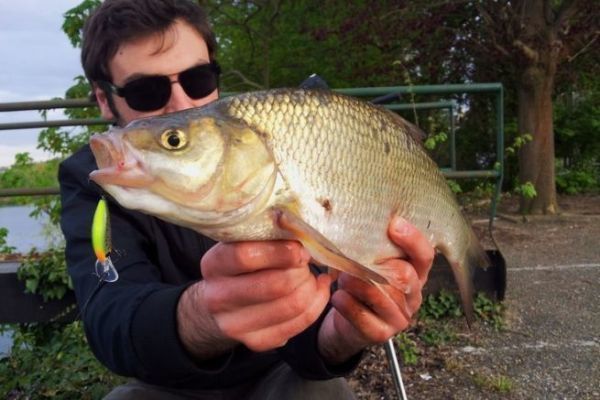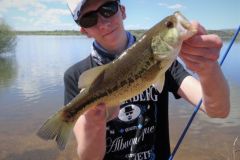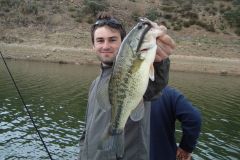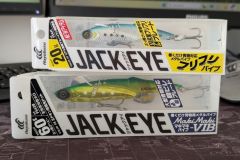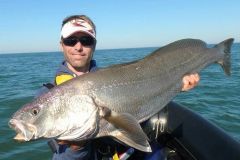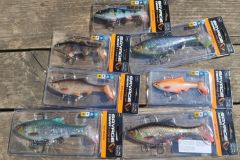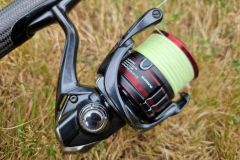What is an ide mélanote?
The ide melanote is a cyprinid, like the carp, roach or chub. It is often confused with other cyprinids such as asp, chub, rotengle or roach.
It is best recognized by its rather tightly packed distribution of scales. Its head is relatively massive, but less so than that of a chub.
Its body is massive and its sides compressed. Like the carp or carrassin, there are coloured specimens (orange) which serve as ornamental fish. Its average size is between forty and fifty centimetres, making it very attractive for light lure fishing.
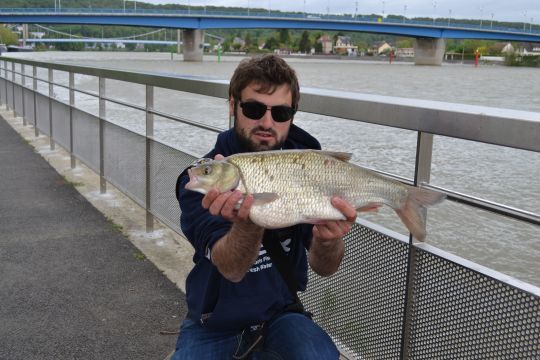
Despite its massive silhouette, the ide is an agile hunter. If it's more omnivorous and opportunistic like the chub, it's very receptive to fish imitations!
For the past two years, ide has been included in the French Street Fishing Championship.
Its range extends over the northeast quarter of France. The ide mélanote has also been reported in the Loire and some of its tributaries. Its arrival in our waters has not caused much of a stir, as it is very often confused with roach or chub. It originates from Eastern Europe and has a strong following across the Rhine.
You should also know that "ide mélanote" is a masculine noun, as it is common to hear the name of this fish in feminine form. So we're talking about an ide melanode and not an ide!
A fish very receptive to lures!
As we said, ide is a fish that is very receptive to lures. Virtually all the techniques and lures that work on chub can be transposed to ide stalking.
This fish is very receptive to small swimming fish, especially crankbaits, small minnows and spinners...
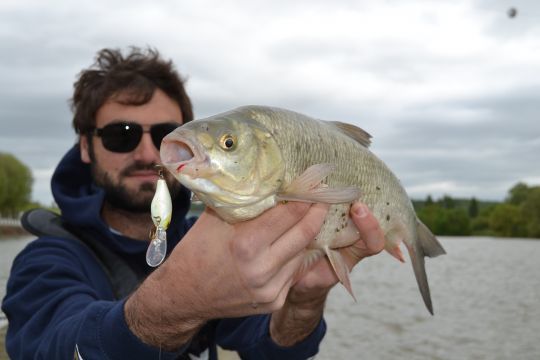
The ide melanote can also be fished on sight or with surface lures! Insect or fruit imitations are very effective. Slow animation is still the most effective and you need a lure that swims well, with little stress, to be attacked.
Unlike the asp, the ide doesn't have a streamlined silhouette and doesn't hunt with lightning attacks.
Good spots for ide fishing
In watercourses where it is present, efforts should be concentrated on edges and areas where the current is "sheared". Downstream structures and bridge piers are key locations, as are water inlets and tributaries.
It's not uncommon to see it evolving under ducks, catching bread that might have escaped the birds, or among shoals of chub.
The right equipment
Ide can be fished with small lures. A UL to ML power rod will be perfect. I love to use a rod with a full tip, which offers more sensations and can handle the raging, heavy head strikes of this cyprinid. It's also a plus for crankbait fishing, as the tip absorbs the vibrations of the lure, or for fishing with unplumbed soft lures that need to be whipped for accurate casting.
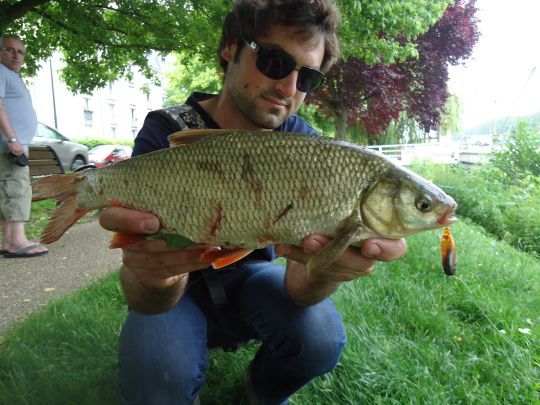
The reel will be a 2000 or 2500 fitted with braid to cast light lures far and accurately. A 20 to 24/100 fluorocarbon leader will be perfect.
A good pair of polarized glasses and a landing net are essential tools if you want to fish for ide. A good pair of pliers will also be a plus to unhook this fish with its rather hard and fleshy mouth.

 /
/ 